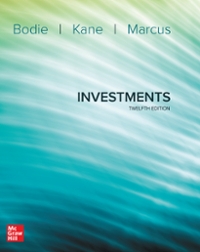Answered step by step
Verified Expert Solution
Question
1 Approved Answer
The goal of this Estate Planning Case Study is to make adjustments to an existing estate plan to eliminate the potential estate tax liability. Today
The goal of this Estate Planning Case Study is to make adjustments to an existing estate plan to eliminate the potential estate tax liability. Today is January 2014, John has been your financial planning client for over ten - years. He is 61 and married to Jane , age 60. He owns Victory Co mpany , a family business professionally valued at $5.6 million. He and Jane have three children and seven grand - children. One son, Paul , manages Victory Co. and will someday own it. John is a member of a study group made up of 20 owners of closely held businesses. The group meets monthly and once a year invites an estate planning professional to talk about how to create the best estate plan. E ach year, one member becomes a case study for this discuss ion, and this year John was the subject of the case study. The presenter, a financial planner named Bryan , recommended a few changes to John 's estate plan. Bryan , like 99 percent of his estate planning peers, is a "traditionalist." His estate planning goal is to make sure that there is enough liquidity (cash - like assets owned by the client, life insurance or both) to pay the potential estate tax after the client dies. Your goals, on the other hand, are much more ambitious: 1) eliminate or reduce as much as possible the potential estate tax liability and 2) maximize the amount of wealth to the client's heirs (typically the children and grandchildren). John wants to hear your second opinion on Bryan 's recommendations, and your task is to adjust his overall est ate plan to make sure that he and Jane can maintain their lifestyle, and to keep John in control of his assets - including Victory Co.- for the rest of his life. John 's overall wealth is about $15 million. This includes the $5.6 - million value of Victory Co., which nets $1.5 million before tax and after paying John a $300,000 salary plus liberal fringe benefits. After taxes, John earns about $400,000 to $600,000 more per year than he and Jane spend. The balance of John 's wealth includes two homes (a main res idence and a vacation home) worth a combined $2.7 million; $1.7 million in his 401(k) plan; cash, and a stock and bond portfolio totaling $1.8 million; $2.9 million in income - producing real estate; and $300,000 in sundry assets. There also is $6.2 million in insurance on John 's life that, per Bryan 's recommendation, is now owned by an irrevocable life insurance trust (ILIT). This insurance includes a $1.2 million whole life policy and $5 million in 10 - year term insurance (with six years remaining in the ter m)
Step by Step Solution
There are 3 Steps involved in it
Step: 1

Get Instant Access to Expert-Tailored Solutions
See step-by-step solutions with expert insights and AI powered tools for academic success
Step: 2

Step: 3

Ace Your Homework with AI
Get the answers you need in no time with our AI-driven, step-by-step assistance
Get Started


